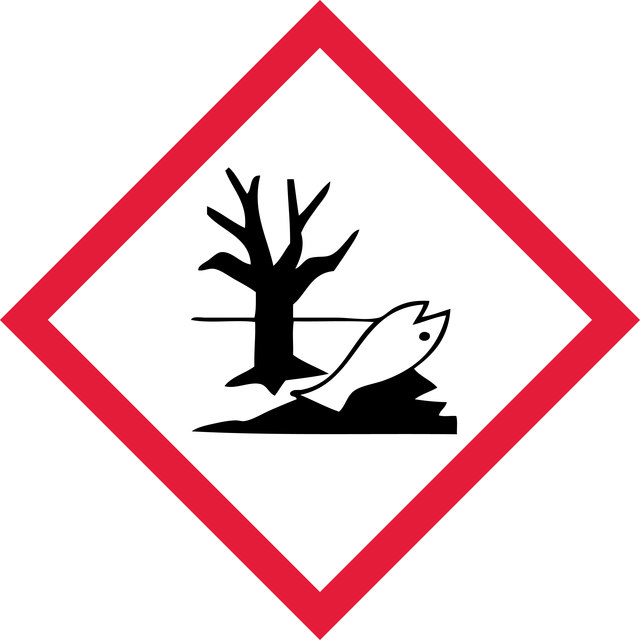C55402
4-Chloro-3-methylphenol
99%
동의어(들):
4-Chloro-m-cresol, PCMC
로그인조직 및 계약 가격 보기
크기 선택
제품정보 (DICE 배송 시 비용 별도)
Linear Formula:
ClC6H3(CH3)OH
CAS 번호:
Molecular Weight:
142.58
Beilstein:
1237629
EC Number:
MDL number:
UNSPSC 코드:
12352100
PubChem Substance ID:
NACRES:
NA.22
Quality Level
분석
99%
양식
solid
bp
235 °C (lit.)
mp
63-65 °C (lit.)
SMILES string
Cc1cc(O)ccc1Cl
InChI
1S/C7H7ClO/c1-5-4-6(9)2-3-7(5)8/h2-4,9H,1H3
InChI key
CFKMVGJGLGKFKI-UHFFFAOYSA-N
유사한 제품을 찾으십니까? 방문 제품 비교 안내
일반 설명
4-Chloro-3-methylphenol, also known as p-chlorocresol or chloroxylenol, is commonly used as a building block in the synthesis of organic compounds. It can be utilized to synthesize various biologically active compounds, including pharmaceuticals and agrochemicals. (2) Additionally, it serves as a potent disinfectant and antiseptic and is also used as a preservative in medicinal products.
애플리케이션
- Compression of mono-4 chloro, 3-methylphenyl phosphate ester and di-4 chloro, 3-methylphenyl phosphate ester through kinetic study: This study discusses a method using 4-chloro-3-methylphenol and POCl3 taken in a 2:1 ratio, exploring their kinetic behaviors (AR Teli, AA Khan, SH Dar, A Rashid, 2017).
- Commercially Important Chlorinated Phenols: Reviews the usage of 4-chloro-3-methylphenol among other chlorinated phenols in various industrial applications (K Smith, G El-Hiti).
신호어
Danger
유해 및 위험 성명서
Hazard Classifications
Acute Tox. 4 Oral - Aquatic Acute 1 - Aquatic Chronic 3 - Eye Dam. 1 - Skin Corr. 1C - Skin Sens. 1B - STOT SE 3
표적 기관
Respiratory system
Storage Class Code
6.1A - Combustible acute toxic Cat. 1 and 2 / very toxic hazardous materials
WGK
WGK 2
Flash Point (°F)
244.4 °F - closed cup
Flash Point (°C)
118.0 °C - closed cup
개인 보호 장비
dust mask type N95 (US), Eyeshields, Faceshields, Gloves
Quantitative measurement of Ca²(+) in the sarcoplasmic reticulum lumen of mammalian skeletal muscle.
Andrew P Ziman et al.
Biophysical journal, 99(8), 2705-2714 (2010-10-21)
Skeletal muscle stores Ca²(+) in the sarcoplasmic reticulum (SR) and releases it to initiate contraction, but the concentration of luminal Ca²(+) in the SR ([Ca²(+)](SR)) and the amount that is released by physiological or pharmacological stimulation has been difficult to
Ian McLaren et al.
Avian pathology : journal of the W.V.P.A, 40(1), 33-42 (2011-02-19)
Two experimental models of Salmonella contamination were used in an attempt to mimic the conditions of disinfectant use on farms. A wet model, for conditions such as boot dips, used disinfectant application to a slurry of poultry faeces inoculated with
Niels Ørtenblad et al.
The Journal of physiology, 589(Pt 3), 711-725 (2010-12-08)
Glucose is stored as glycogen in skeletal muscle. The importance of glycogen as a fuel during exercise has been recognized since the 1960s; however, little is known about the precise mechanism that relates skeletal muscle glycogen to muscle fatigue. We
C D Sanmartin et al.
Neuro-degenerative diseases, 10(1-4), 34-37 (2012-01-31)
Soluble amyloid-β peptide oligomers (AβOs), which are centrally involved in the pathogenesis of Alzheimer's disease, trigger Ca(2+) influx through N-methyl-D-aspartate receptors and stimulate reactive oxygen species generation in primary hippocampal neurons. We have previously reported that AβOs promote Ca(2+) release
Ramón Jiménez-Moreno et al.
Pflugers Archiv : European journal of physiology, 459(5), 725-735 (2010-01-14)
The endoplasmic/sarcoplasmic reticulum (ER/SR) plays a crucial role in cytoplasmic signalling in a variety of cells. It is particularly relevant to skeletal muscle fibres, where this organelle constitutes the main Ca2+ store for essential functions, such as contraction. In this
프로토콜
Analytical standard separation of various phenols for research and industrial applications.
자사의 과학자팀은 생명 과학, 재료 과학, 화학 합성, 크로마토그래피, 분석 및 기타 많은 영역을 포함한 모든 과학 분야에 경험이 있습니다..
고객지원팀으로 연락바랍니다.

